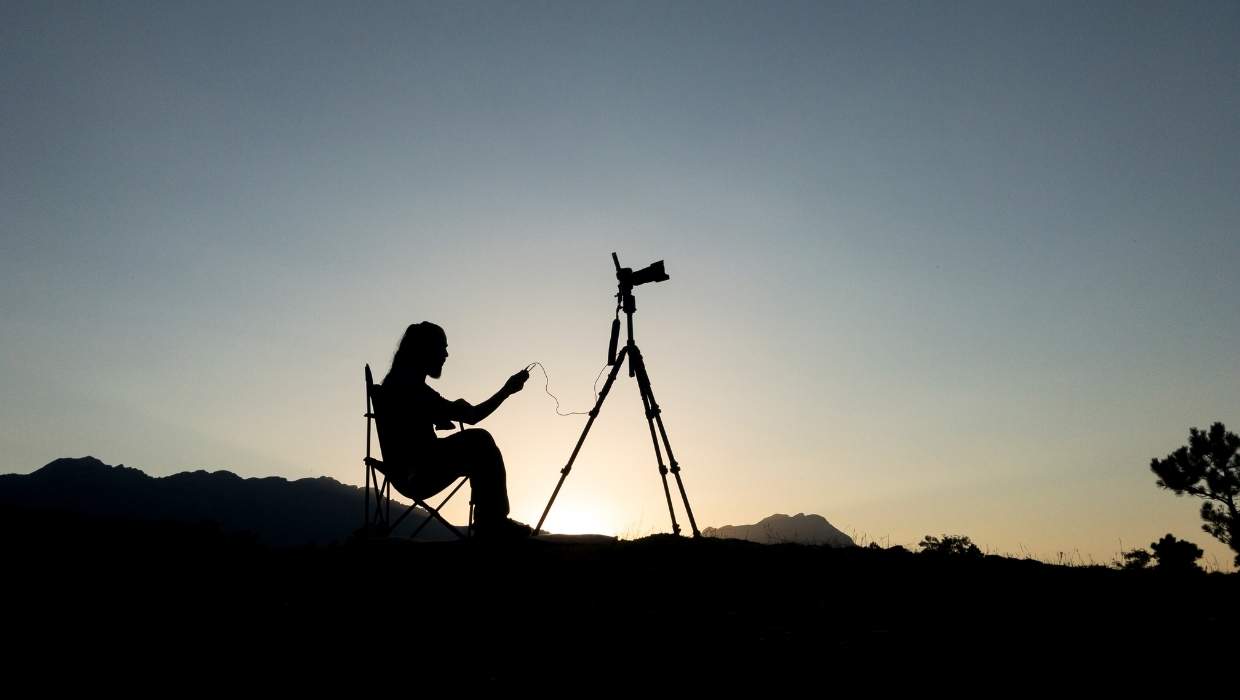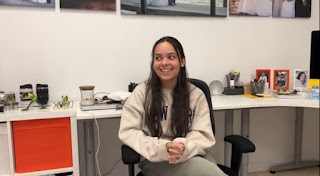Our episodic documentary 'Make It Happen' works to develop the idea of the immigrant experience of establishing a company in the US. This documentary project has been a great experience for me and group members. To begin this reflection, I would like to start in the planning portion. When we were brainstorming ideas about what we could produce, we reflected back to our old in-class projects. We were having a hard time deciding what to do. At first, we decided as a group on a horror short film, but to a surprise, we switched up last minute and decided to do a documentary.
I had previously worked with this same group of Isabella Galarraga and Mariana Sanchez on another documentary project. We had created the first episode of 'Make It Happen', which focused on the challenges faced with language barriers when starting a new company in the US. We wanted to produce something similar to this, so we went off the same idea and decided to produce a project that entailed information on the expansion of a company in the US and the difficulties faced when doing so. As well as this, we decided on implementing information regarding the effect that this journey had on our subject's family. Now, let's dive into the current project.
To reiterate, our documentary explores the journey of expanding and establishing a company in the US as an immigrant, with the focus being on Javier Galarraga. Javier, born in Venezuela, is the proud owner of Sumiflex, an export company that made it's way from Venezuela. Our main goal with this project was to delve deep into Javier's journey and see the effect that had on him today and his family as well. We wanted to dive into the Latin American-community in hope to inspire and encourage other Latin Americans to take risks and expand their companies as well.
Since we went off the basis of our last documentary, we decided to make it a episodic documentary, Since it is an episodic documentary, the target audience would normally remain the same, but after my target audience research, we concluded that our target audience for this piece is people ages 38-42. Transitioning into the interviews, we decided to film Javier and his daughter Isabella Galarraga (my group member). Since we are also talking about the effects that this has had on his life and his family, we thought it best to interview Isabella because his daughter's decisions reflect his journey as well. When talking about the interviews, we struggled with the choice between direct and indirect interviews. At first, we didn't know if we wanted to include the question of the interviewer, or only show the question being answered by Javier. After careful consideration, we decided to go with indirect interviews because they looked more smooth and professional.
Our documentary focuses on Javier's entrepreneurial journey and the effects on his life and family. Looking even further than this, our documentary also focuses on social issues such as the challenges of immigration, the hurdles faced due to cultural adaptation, and the struggles of starting a business in a new country. By choosing to make Javier the center of our documentary, we gave a voice to these issues, making them more understandable to our audience.
The elements of my production, including the decision to create an episodic documentary, focusing on the narrative of expanding a business in the US as an immigrant, and the choice of using indirect interviews, work together to create a sense of branding. All these elements combined position my documentary as an insightful exploration of the immigrant entrepreneurial journey, making it unique from other content surrounding it.
Our audience is people ages 38-42. Most viewers will be either immigrants, social activists, or people looking to expand their viewpoint. My products engages with my target audience by focusing on impactful stories that would resonate with their interests. By using real-life cases like Javier's, our audience can see the effect of hard work and perseverance, inspiring them to pursue their goals as well. By including the portion of the project with Isabella, the documentary also fosters a connection with viewers who value family, further engaging with the audience with the content. Another way my product engages with my audience is through our social media, As I stated in my social media research on a previous blog, the target audience that we chose directly correlates with the social media platform Facebook. With the social media page that we created, we are able to post content that resonates with our target audience, which was carefully chosen by factoring in the target audience of facebook and the typical age of immigrants.
Below, you can see a picture of our Facebook page and the link to it:
My research into the challenges that immigrants face when starting a new company in the US has directly influenced how I approached the documentary. Since this is an episodic documentary and I went off the idea of my last documentary, I was able to build my understanding of the struggles of establishing a company in the US coming from a different company. This understanding has also allowed me to narrow my narrative, making it more informative and emotionally compelling, thus challenging the immigrant conventions by highlighting the success rather than the struggles. Our choice of indirect interviews has also challenged conventions of documentary interview styles, opting for a more narrative-driven approach instead of including a distracting question.
As this project comes to a close, I have reflected a lot on the process of my project. This journey has been very fun and full of hard work. I am very happy with the outcome me and my group have worked for. Each choice we made and each idea we have talked about has been carefully crafted and clearly shown in the final outcome. The blend of personal narratives, strategic choices in interviews, and the b-roll we made is collectively shown in our documentary that informs and resonates with our viewers.





























